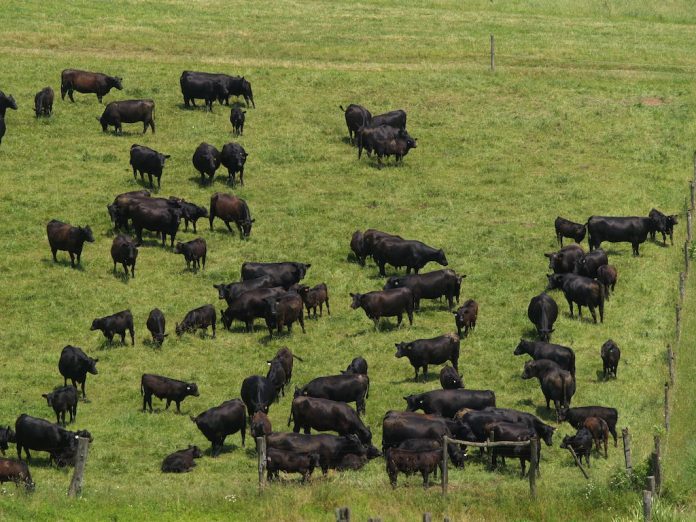The cattle market’s future, like the West’s wild and rowdy past, will feature sweat, brawls and blood.
And that’s just the meatpacking side because today’s fast-thinning cattle numbers, plus the rise of at least eight new, smaller beef packers, promise a bruising fight among the upstarts and Big Meat for enough cattle to keep kill lines at capacity and any packer within a mile of being profitable.
Current beef cattle numbers show just how cutthroat the coming fight will be. Last year’s widespread drought forced cattlemen to cull herds. That fire sale pushed U.S. cattle slaughter up a whopping 13% over 2021 and dropped this year’s cattle inventory to 89 million head, or nearly 3 million less than 2022.
Heavier slaughter weights can make up for lower slaughter numbers. For example, according to a September posting on Farm Journal’s AgWeb, this year’s cattle slaughter will yield 27 billion pounds of beef or 3 billion more pounds than 1975’s herd of 132 million head.
But the extra weight doesn’t solve today’s packer problems, said John Nalivka, a market expert. There’s just not enough cattle for today’s packers to kill, he told FJ, let alone for eight newcomers, too.
“’Beef packer capacity utilization,’” Nalivka explained, “’will be about 87% this year, and I project it will be about 80% next year without (emphasis added) any additional capacity added. The drop at cow plants’” — slaughterhouses that handle lower quality, older mama cows — “’will be even greater.’”
“(P)ackers need capacity utilization to run from 90% to 94% to capture efficiencies of size and maintain profitability,” Nalivka added. Next year’s steep drop in steer and heifer slaughter will make 2024 an even messier challenge for packers than 2023.
Few in cattle country will lose sleep over Tyson Foods, JBS, Cargill and National’s money-losing woes. The packers, after all, made obscenely fat profits off cowboys and feedlots for nearly a decade so watching them whine, wiggle and wrangle for slaughter cattle might be more entertaining than attending the local rodeo.
In fact, those obscenely huge profits — especially during the pandemic — helped fuel rancher and feedlot interest to invest in most of today’s new, smaller regional slaughter plants. Some, like TruWest Beef in Jerome, ID, promise 500-head daily capacity; others, like Producer-Owned Beef in Amarillo, Texas, are aiming for 3,000-head daily kill.
All total, “At least eight (packer) projects that have the potential to add 11,700 head to daily (slaughter) capacity are in various stages of completion,” FJ related.
Given those facts, have these meatpacking newcomers — mostly cow-punching ranchers and boots-on-the-ground feedlot owners — climbed out of their saddles only to walk straight into the deadliest, bloodiest meatpacker shakeout in recent memory?
Maybe, but most hope their smaller size will make them more able to find profitable niches in local and regional markets underserved by the packer elephants. One newbie, Sustainable Beef of North Platte, Nebraska, is doing just that by hooking up with the elephant of U.S. groceries, giant Walmart.
According to Successful Farming magazine, “Last year, Walmart acquired a minority stake in Sustainable Beef … and promised to buy most of the beef it produces.” Large cuts of Sustainable’s beef carcasses will be trucked to Walmart’s new, $257 million plant in Olathe, Kansas, to become “meat case-ready steaks, filets, and more” for Walmart’s Midwestern stores.
The Sustainable/Walmart pairing is just the most recent example of Big Food finding another way to capitalize on rural America’s increasing need for alternative — and often less-than-ideal — routes around heavily concentrated, deeply uncompetitive markets like today’s Big Agbiz-dominated dairy, beef, pork and poultry markets.
Will these small packer-giant retailer partnerships work? For “the chosen few,” Kansas rancher and private meatpacker Mike Callicrate, told SF.
“They might be rewarded,” but since no one has tackled the underlying issues of “‘concentration, consolidation and captive supply,’” he adds, it won’t be long before the market will become even ‘“less competitive.’”
History confirms Callicrate’s clear-eyed forecast; Big Meat, after all, has the bankroll to ride out market storms. The start-ups, on the other hand, mostly have just hope.














